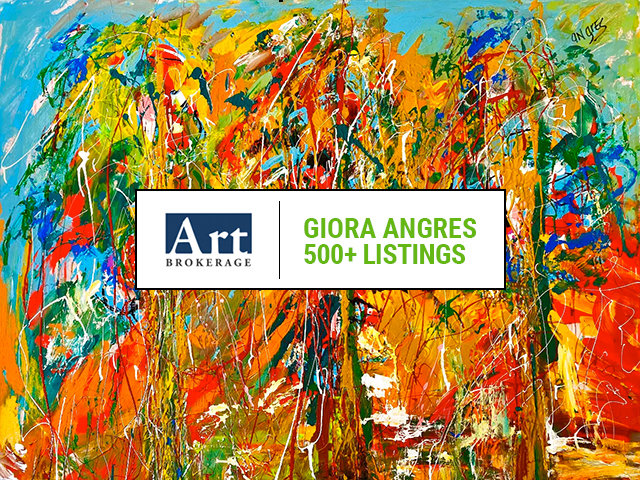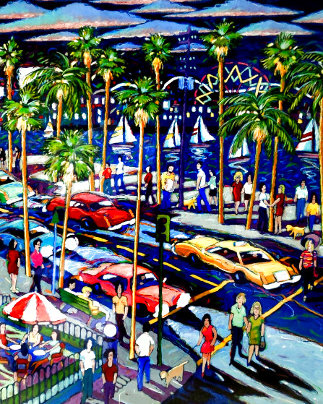-

-
Bernd and Hilla Becher
GermanyArt Brokerage: Bernd and Hilla Becher German Artists: Artists Bernd (1931-2007) and Hilla Becher (b. 1934) were both born in Germany. Bernd Becher was born in Siegen. He studied painting at the Staatliche Akademie der Bildenden Künste Stuttgart from 1953 to 1956, then typography under Karl Rössing at the Düsseldorfer Kunstakademie from 1959 to 1961. Hilla Becher was born in Potsdam. Prior to Hilla's time studying photography at the Düsseldorfer Kunstakademie from 1958 to 1961, she had completed an apprenticeship as a photographer in her native Potsdam. Both began working as freelance photographers for the Troost Advertising Agency in Düsseldorf, concentrating on product photography. The couple married in 1961. Meeting as painting students at the Kunstakademie Düsseldorf in 1957, Bernd and Hilla Becher first collaborated on photographing and documenting the disappearing German industrial architecture in 1959. The Ruhr Valley, where Becher’s family had worked in the steel and mining industries, was their initial focus. They were fascinated by the similar shapes in which certain buildings were designed. In addition, they were intrigued by the fact that so many of these industrial buildings seemed to have been built with a great deal of attention toward design. Together, the Bechers went out with a large 8 x 10-inch view camera and photographed these buildings from a number of different angles, but always with a straightforward "objective" point of view. They shot only on overcast days, so as to avoid shadows, and early in the morning during the seasons of spring and fall. Objects included barns, water towers, coal tipples, cooling towers, grain elevators, coal bunkers, coke ovens, oil refineries, blast furnaces, gas tanks, storage silos, and warehouses. At each site the Bechers also created overall landscape views of the entire plant, which set the structures in their context and show how they relate to each other. They excluded any details that would detract from the central theme and instead set up comparisons of viewpoint and lighting through which the eye is led to the basic structural pattern of the images being compared. This principle, which is allied to the philosophy underlying the New topographics movement, is most obvious in the two published series, Anonyme Skulpturen: Eine Typologie technischer Bauten and Typologien, Industrieller Bau, 1963–1975, in which the images are contrasted in groups of three. Another early project, which they pursued for nearly two decades, was published as “Framework Houses” (Schirmer/Mosel) in 1977, a visual catalog of types of structures, an approach that characterized much of their work. In drawing attention to the cultural dimension of industrial architecture, their work also highlighted the need for preservation of these buildings. On the couple's initiative, for example, the Zollern coal mine at Dortmund-Bovinghausen in the Ruhr, for the most part an art-deco structure, was designated a protected landmark. The Bechers also photographed outside Germany, including from 1965 buildings in Great Britain, France, Belgium and later in the United States. In 1966, they undertook a six-month journey through England and south Wales, taking hundreds of photographs of the coal industry around Liverpool, Manchester, Sheffield, Nottingham and the Rhondda Valley. In 1974, they traveled to North America for the first time, touring sites in New Jersey, Michigan, Pennsylvania, and southern Ontario, depicting a range of industrial structures, from coal breakers to wooden winding towers. The Bechers exhibited and published their single-image gelatin silver prints, grouped by subject, in a grid of six, nine, or fifteen. By the mid-1960s the Bechers had settled on a preferred presentational mode: The images of structures with similar functions are then displayed side by side to invite viewers to compare their forms and designs based on function, regional idiosyncrasies, or the age of the structures. The Bechers used the term “typology” to describe these ordered sets of photographs. The works’ titles are pithy and captions note only time and location. In 1989–91, for an exhibition at the Dia Art Foundation in New York, the Bechers introduced a second format into their oeuvre: single images that are larger in size—twenty-four by twenty inches—and presented individually rather than as gridded tableaux. Listings wanted.
Read More + - Create Listing 0 Artworks for sale 1 Followers
-
We are actively seeking listings for Bernd and Hilla Becher.
Create a free listing or free wanted ad.


























